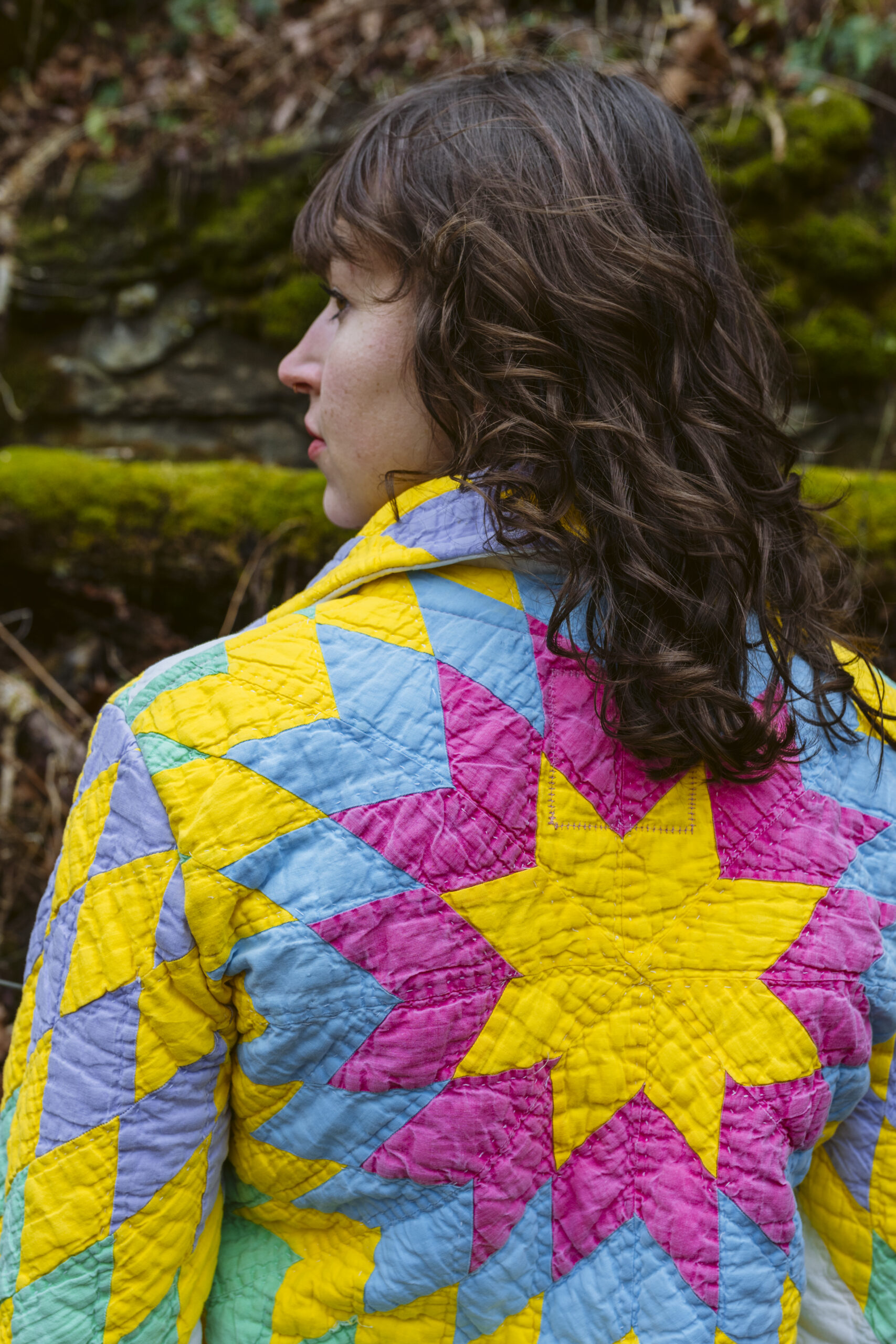Like so many artists, Carolyn “CJ” Janet was an entrepreneur long before opening up a business bank account or filing for an LLC.
She started small — selling simple scrap fabric scrunchies in exchange for “beer money” during undergrad at University of Pittsburgh. It was a quick, fun way to make a few bucks using her knack for sewing. After graduation the pandemic hit, and her sewing practice accelerated. She started fashioning face masks to donate to hospitals and sell to family and friends. An unexpected perk of more time indoors, there was now time to practice and perfect old hobbies and build a more intentional mindset. While others were in their sourdough phase or Tiger King binge, Carolyn’s sewing machine became her pandemic partner.
Soon after she moved to West Virginia (her now proclaimed forever home) to start her master’s in speech language pathology, her sewing practice snowballed. She created foraging bags and small accessories for birthday gifts. It wasn’t long until Carolyn first sewed what would become her calling card: a quilt coat. She has continued to diversify her line of originals, also including fanny packs, vests, tops and elevated bandanas.

It’s a straight-forward but labor intensive process once the quilt gets thrifted. Each piece is vigorously deep cleaned with a cocktail of fabric cleaners in a hot bath. She agitates each quilt by hand, learning through trial and error that washing machines are too harsh for the aged fabric. Then, the fabric air dries before being laid out for inspection.
“I look like a freaking weirdo. I straight up crawl over it and just look at everything,” Carolyn explained. “I’ll pin any tiny holes and spot treat any remaining stains. Then I start piecing together in my mind how I want the coat to look based on the pattern.”
She uses the often generations-old patterns already lovingly stitched into the quilts as a guidebook for what will become each of her coat designs. Cutting the pattern takes acute attention to detail before strapping in for a 12-ish hour sewing session. Embellish with snaps, big pockets and a bright inner lining, and you have a CJ Sews original.
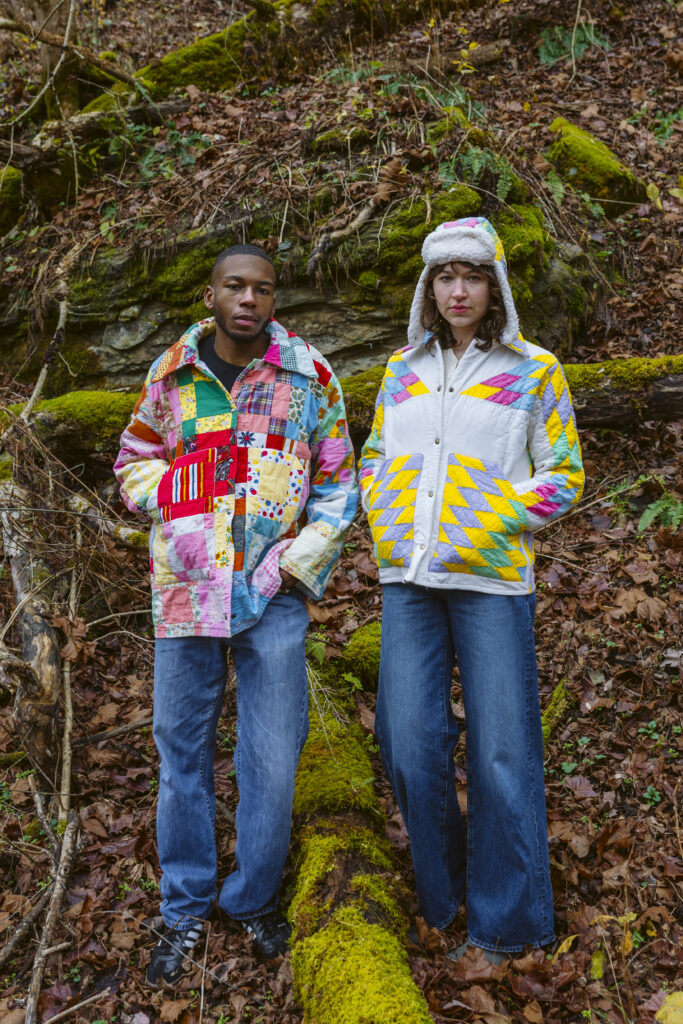
“I only use quilts and textiles from thrift stores because it’s very important to me that fashion is sustainable — making the world more beautiful, but not at the expense of our environment,” she explained.
Carolyn’s love for sewing was first forged in mommy-and-me classes as a child. Raised in the Philly suburbs, Carolyn had the King of Prussia mall (the third-largest retail shopping center in America) right in her backyard. Like most tweens, she had no hesitation buying a new fit from the commerce colossus for every new party, concert or school dance to stay fresh with the latest trends.
As she aged and learned more about the adverse effects of shopping fast fashion, she knew she wanted to disrupt that system. Since moving to West Virginia, a place where natural beauty and extractive industries are in a perpetual clash, Carolyn’s desire to create and consume eco-conscious fashion has never been stronger.
“Politically and as an individual, I am now making choices that align with the planet,” she said. “I’ve always loved expressing myself through clothes. With making these coats, I want them to be big, bold and beautiful, but it is also very important to me that it is something that is not harming the earth.”
Her process is certainly not as fast as grabbing a jacket off the rack, but it’s the next stage in a lineage of functional and sustainable artwork. Quilting emerged in Appalachia out of necessity. Poverty-stricken homemakers — almost always women — took forgotten scrap fabric, old clothes or flour sacks and stitched them into quilts to keep their families warm. Beauty was stitched from ingenuity in spite of hardship.
Over time, patterns became more intricate, and the perception of quilting morphed to view the craft as decorative arts and less as thrifty solutions. This genesis is stitched into the work of garment up-cyclers like Carolyn, as she transforms the once-forgotten back into treasured, 44 functional and original art pieces. The human hand touched, washed, cut and sewed the fabric to create the original quilt, then did it again to create anew. It’s a cyclical process that honors the centuries of women’s work before her.
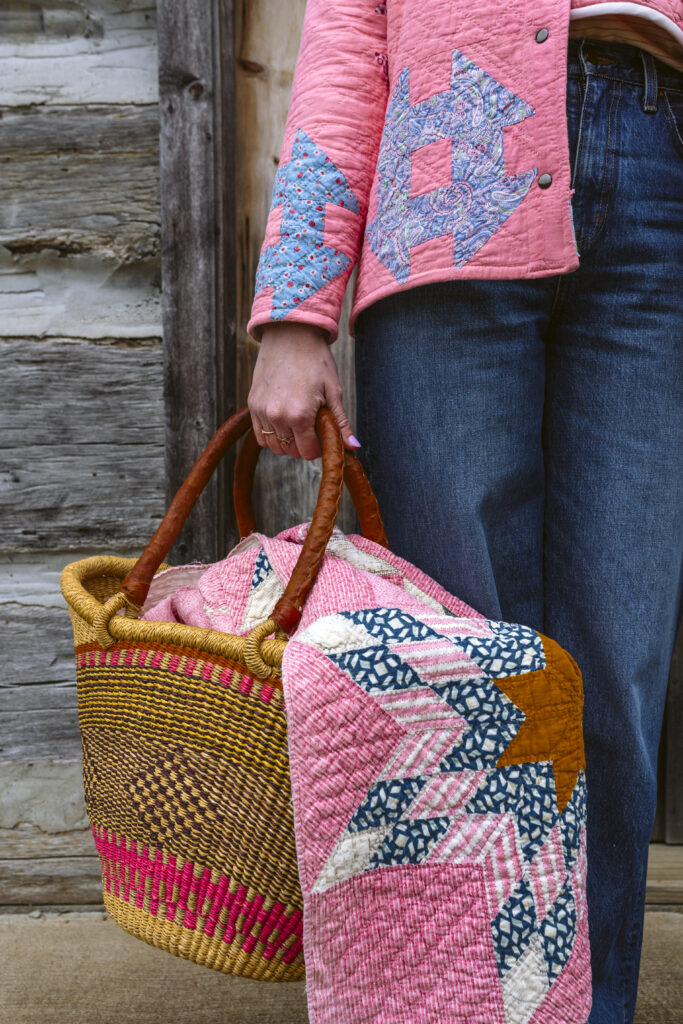
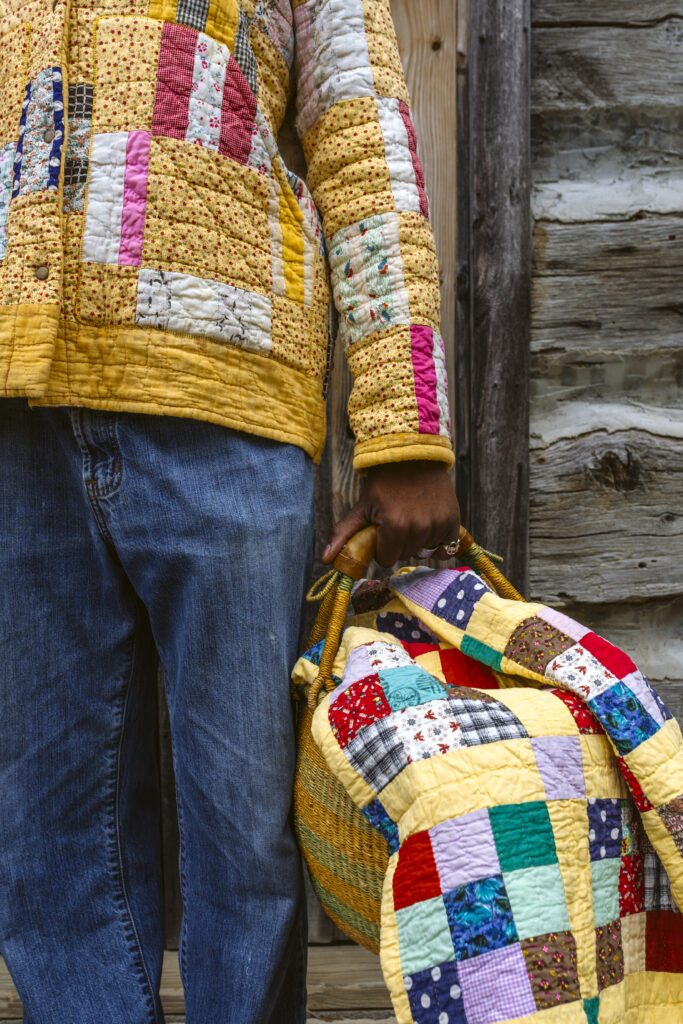
While every design is different, the idea to upcycle quilts certainly is not singular to CJ Sews, and she knows that. In her own network there’s Made by Meg in Fairmont, WV, and Reclaimed Threads in Morgantown. In Pittsburgh, there’s Otto Finn and Flux Bene (YNST, Issue 02), and dozens more regional designers upcycling quilts in a similar fashion — pun intended — to Carolyn.
Despite this, other creatives weren’t mad that Carolyn came on the scene. They weren’t jealous of her wins, or preying on her missteps. In fact, many of the older, more experienced creatives she encountered offered instant mentorship.
“I just feel like people here really want to help. They just want to make everything here better. It’s so many acts of love,” Carolyn said. “Whether it be helping with a real task, offering a connection, helping with a sewing project or just letting me whine about how money works.”
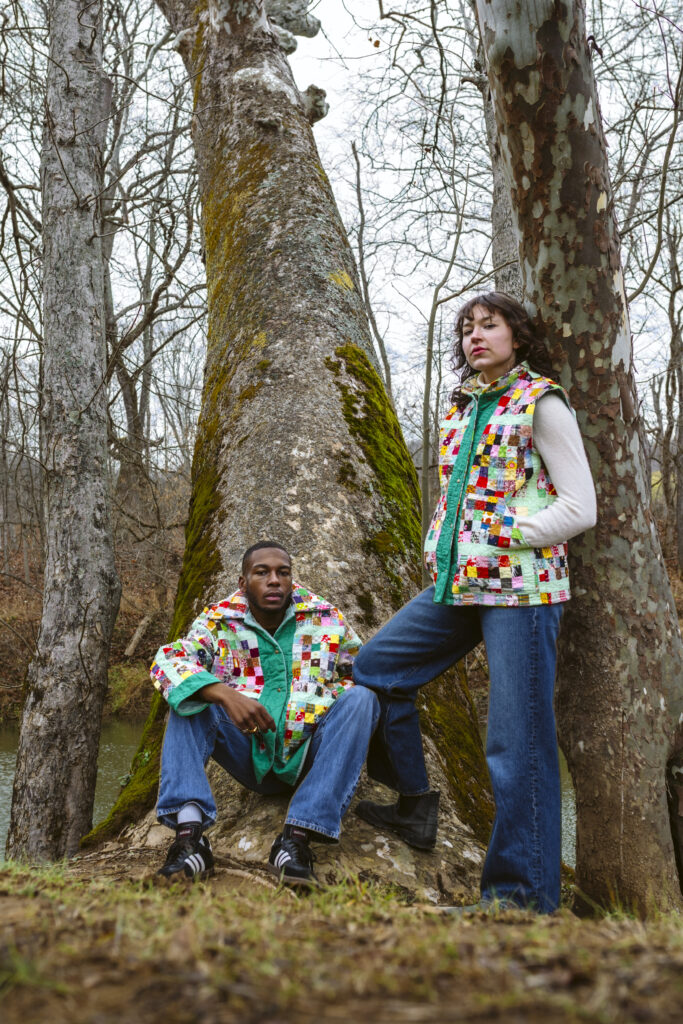
Thus is the spirit of being a creative in Appalachia: collaboration over competition. She cites some of her most impactful mentors as Anne of A&J Studio, Lory Osborn (the “sewing fairy godmother” who helped Carolyn make her first coat) and then “Nellie f*cking Rose.”
In 2023, after only making her second coat, Carolyn shot an Instagram message to the accomplished textile designer and asked if they could meet for coffee whilst visiting Nellie’s near-mythical tiny art town, Thomas, WV. Naturally, she said yes. Nellie offered constructive feedback on Carolyn’s early designs and gave her a year-out commitment to come back for next year’s Labor Day weekend and sell her coats in Nellie’s shop.
Not only was it her best sales to date, but it was the confidence boost Carolyn needed to take herself seriously as a business owner, not just a hobby artist. (Seeing Americana music icon Sierra Ferrell sporting a CJ Sews jacket at Healing Appalachia music festival this fall certainly helped with that sense of growth too.)
Now, Carolyn is well on her way to fulfilling her goal of making sewing a significant part of her life, career and income — a goal that 12 months ago felt like a lofty dream. Thinking about your art as a business, as something lucrative that deserves to be valued and deserves attention beyond just personal practice, is the hurdle I find so many creatives have to surmount. But if CJ Sews’ progress in the last year is a testament, when you value your work, others will too.
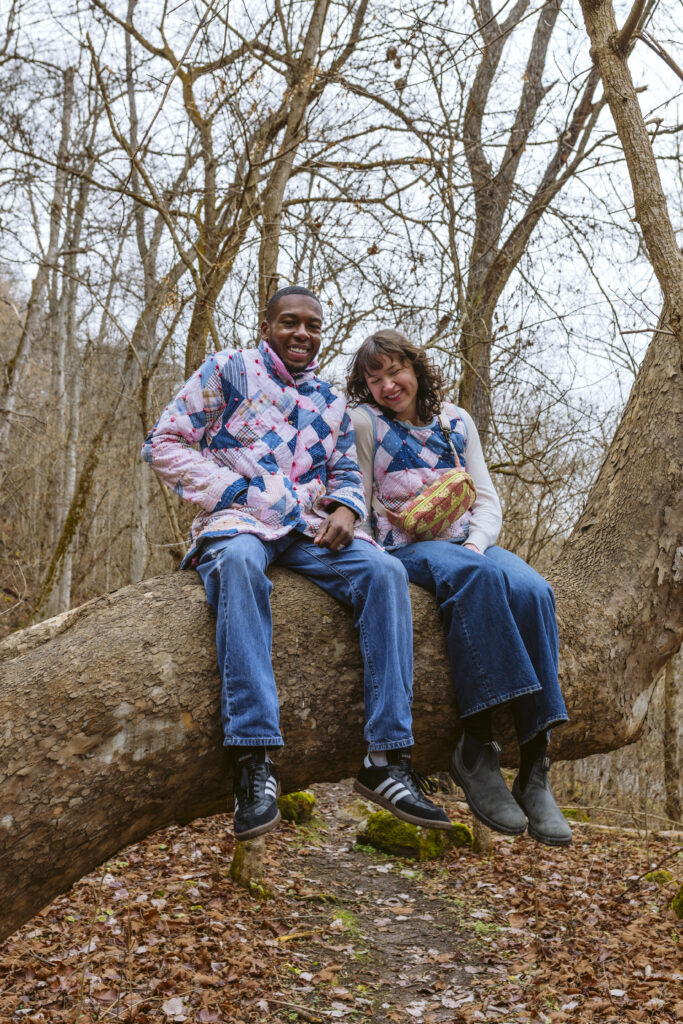
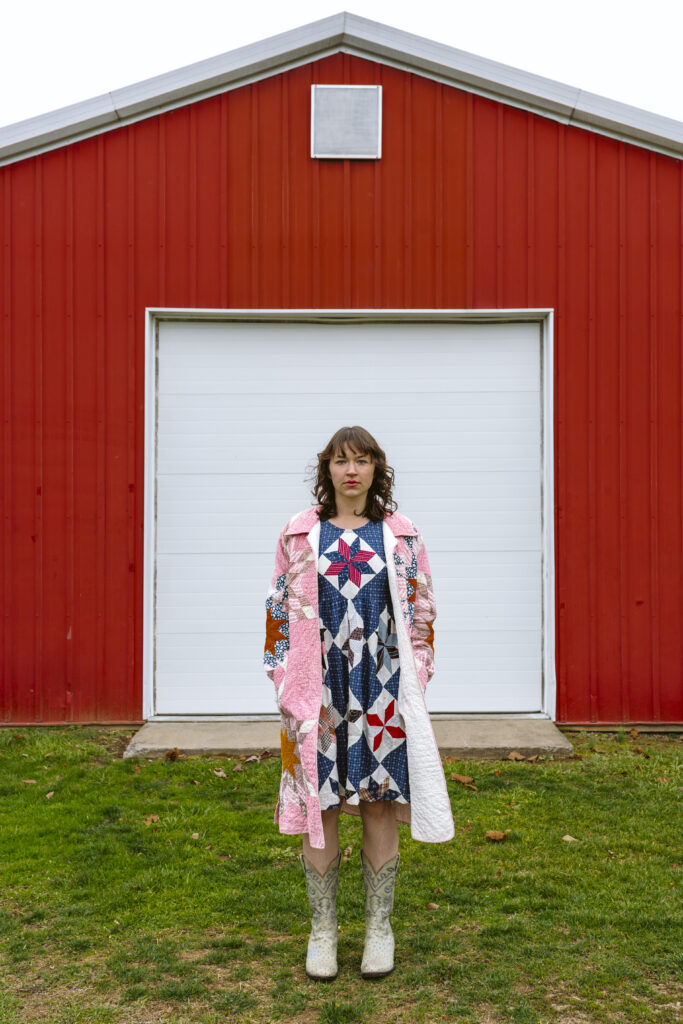
Original photography by Jason Hawke
